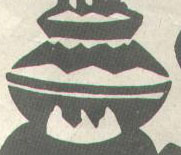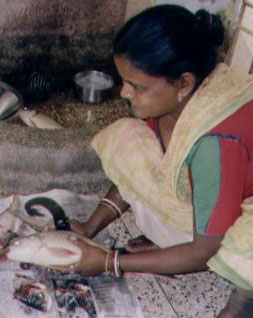|
|
About |
|
The Bengalis are perhaps the greatest food lovers in the Indian subcontinent. An elaborate meal of many items being cooked in a Bengali kitchen is a very common sight. Dishes are carefully prepared according to the recipes handed down from generation to generations. Though Modern Bengali cooking is being influenced globally still our tongue will always yearn for the taste of Muro Ghonto - an exotic dish prepared with fish heads and rice together, Aloo Posto - potatoes cooked in Poppy seed paste andSorshe Ilish - Hilsa Fish cooked with Mustard seed paste. The staple food of the Bengalis are Rice and Fish. The Bengali culinary tradition is mainly based on the ingredients available locally. Bengal's geographical features is also responsible for their food habit. The vast river network, its climate and its fertile soil help to grow Rice, Mustard and other crops. Fruits like coconuts, mangoes, bananas are also grown plentifully. The rivers, ponds and lakes provide fishes for the fish lovers. The cooking medium is Mustard oil which adds to the aroma and flavour of the Bengali food. |



|
According to the traditional Bengali way of serving food it should be served on the floor. An Asan- an individual piece of carpet is placed on the floor for the person to sit on it. In front of this Asan the food platter- Thala is placed which is usually made of Bell Metal.The plate is often surrounded by an array of Bell Metal bowls- Bati , containing various items.The Bengalis eat their food with their fingers-what else could be much better to pick out the bones from Koi (Climbing Perch) and Ilish (Hilsa Fish- sort of like American Shad). |
|
|
Bengali food is not ladled onto the plate all at once, but served course by course.
First you start by mixing a part of the rice with ghee, a little bit of Lebur rosh
- lemon juice and a pinch of salt and having it.
Then something bitter to clear the palate for the good food to come. This might be
Shukto/ bitter vegetable curry, served only for lunch or just Uchchey Bhaja/ fried bitter gourd. Next comes
the rice served with Dal
and something
Bhaja/fried (could be aubergine, potato, pumpkin, or other
seasonal veggies), after which you move on to a Tarkari /dry or gravied vegetable dish. The fish course follows,
and, if two kinds of fish are to be served, you eat the lighter one before the richer. Rice is very important,
so the rice is always offered around. If there is Mangsho/meat on the menu it follows the fish.
Then comes the Chutney or Ambal. Lastly the dessert
which could be Mishti Doi/ sweet yoghurt, Sondesh, or the famous rossogolla.
And finally, a Paan/ Beetle leaf.









 .
the handle less, rimmed, deep
flatbottomed Dekchi
.
the handle less, rimmed, deep
flatbottomed Dekchi  is the hallmark of Bengali kitchens. Also found are the Hatha (ladle),
the Khunti
(metal spatula),
the Jharni (perforated spoon), the sarashi (pincers used to remove pots
from fire), the Ghunti (wooden hand blender) for pureeing dal, the old wooden
Chali Belun
is the hallmark of Bengali kitchens. Also found are the Hatha (ladle),
the Khunti
(metal spatula),
the Jharni (perforated spoon), the sarashi (pincers used to remove pots
from fire), the Ghunti (wooden hand blender) for pureeing dal, the old wooden
Chali Belun  (the round pastry board and
the rolling pin), the Shil Nora
(the round pastry board and
the rolling pin), the Shil Nora  (a unique cutting tool).
(a unique cutting tool).






 |
 |
 |

